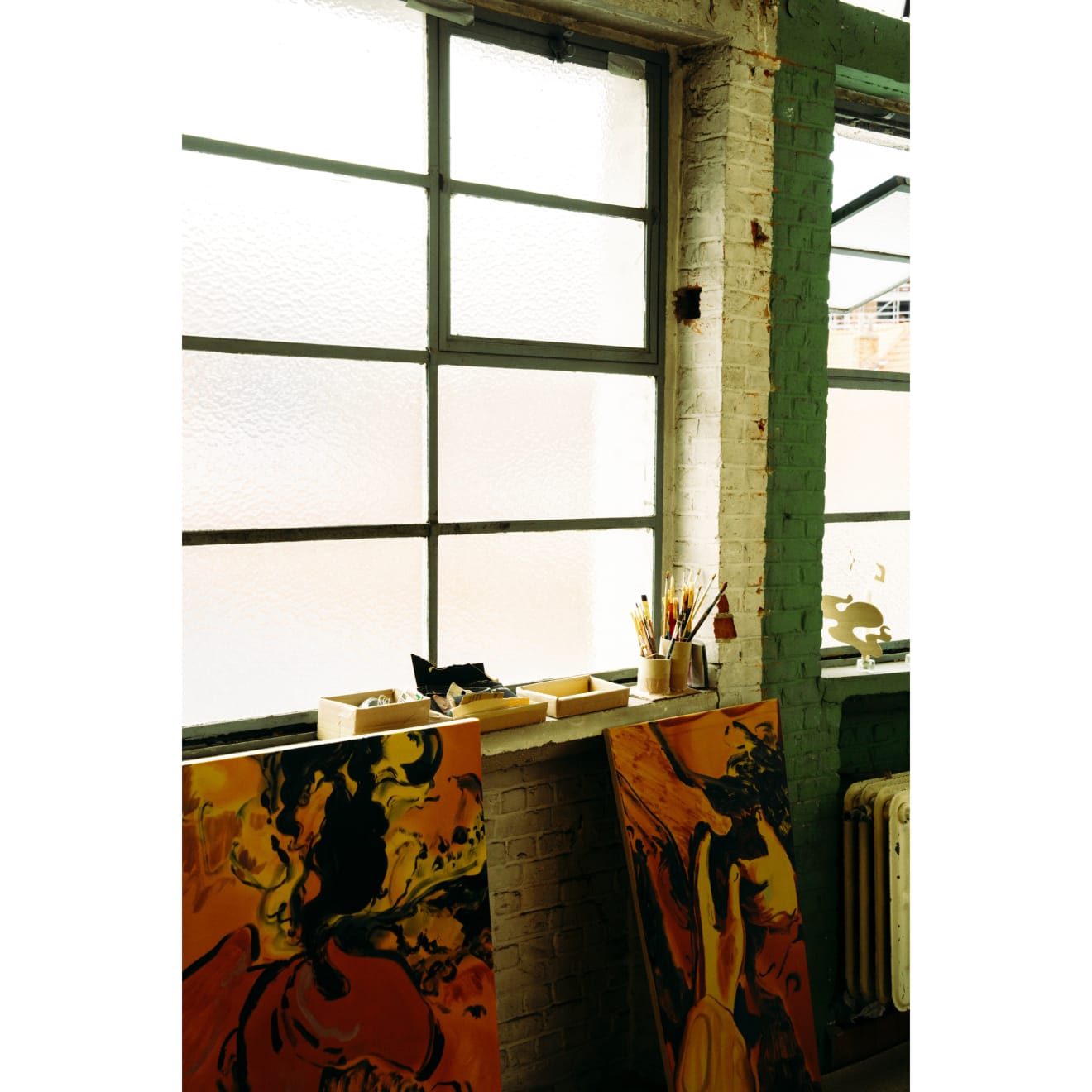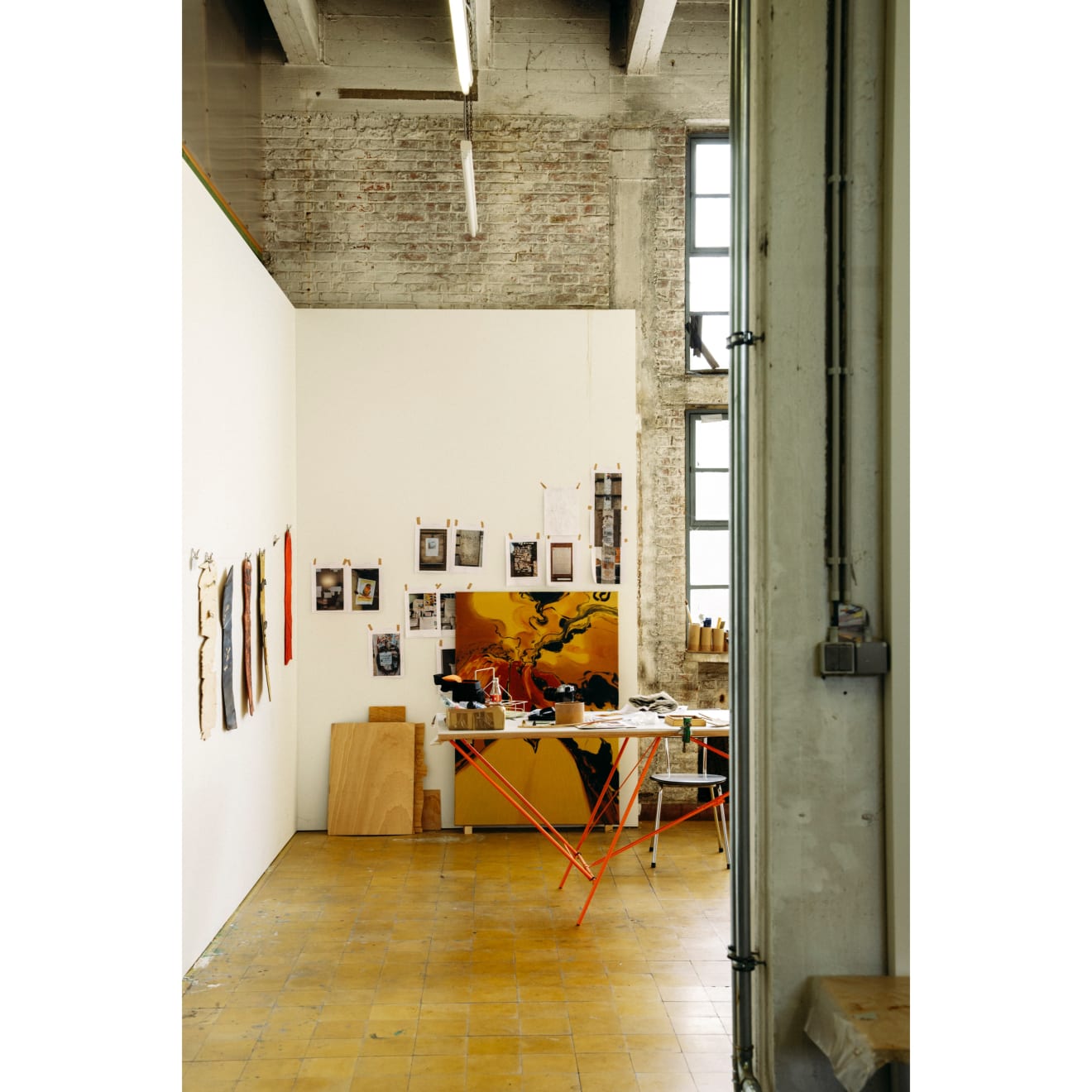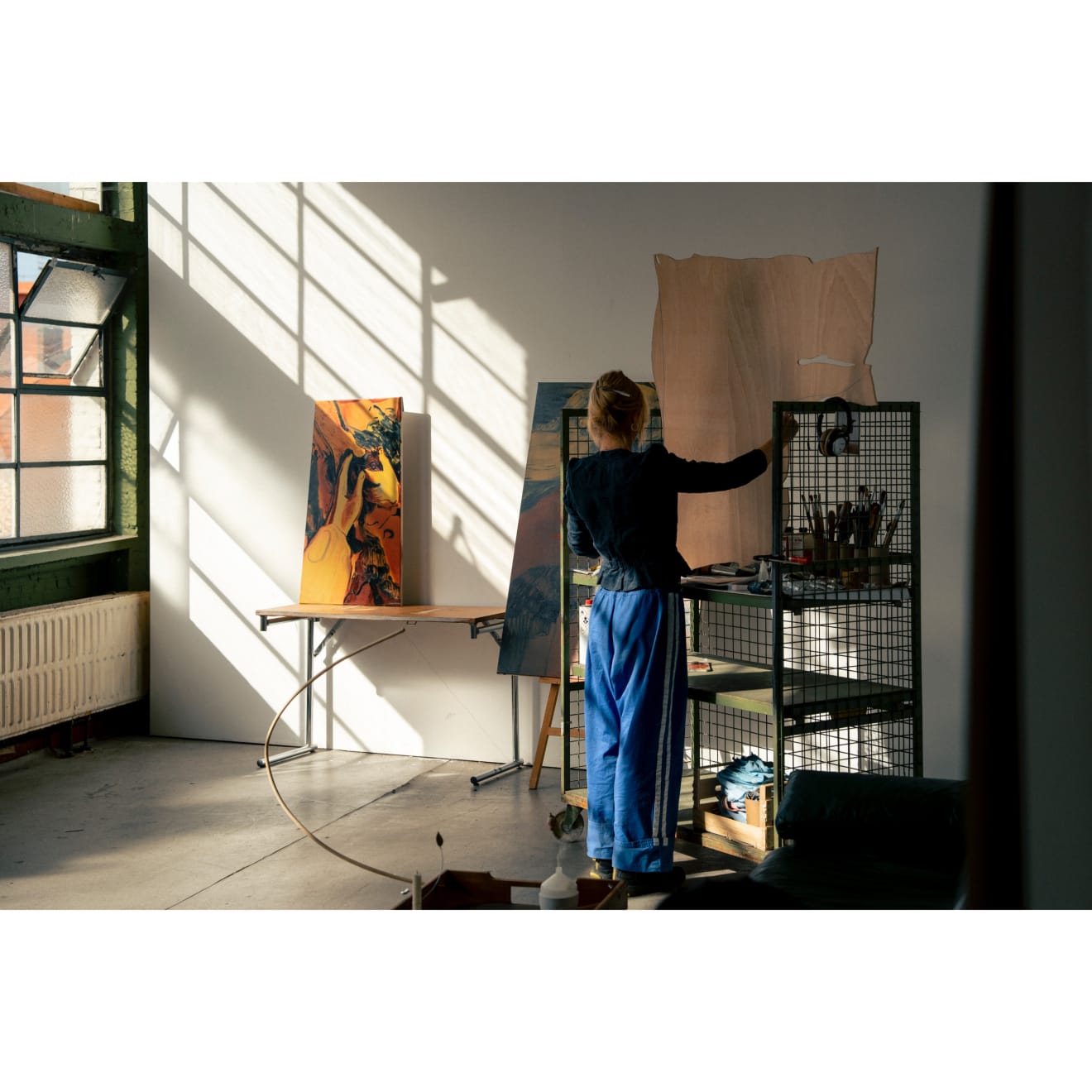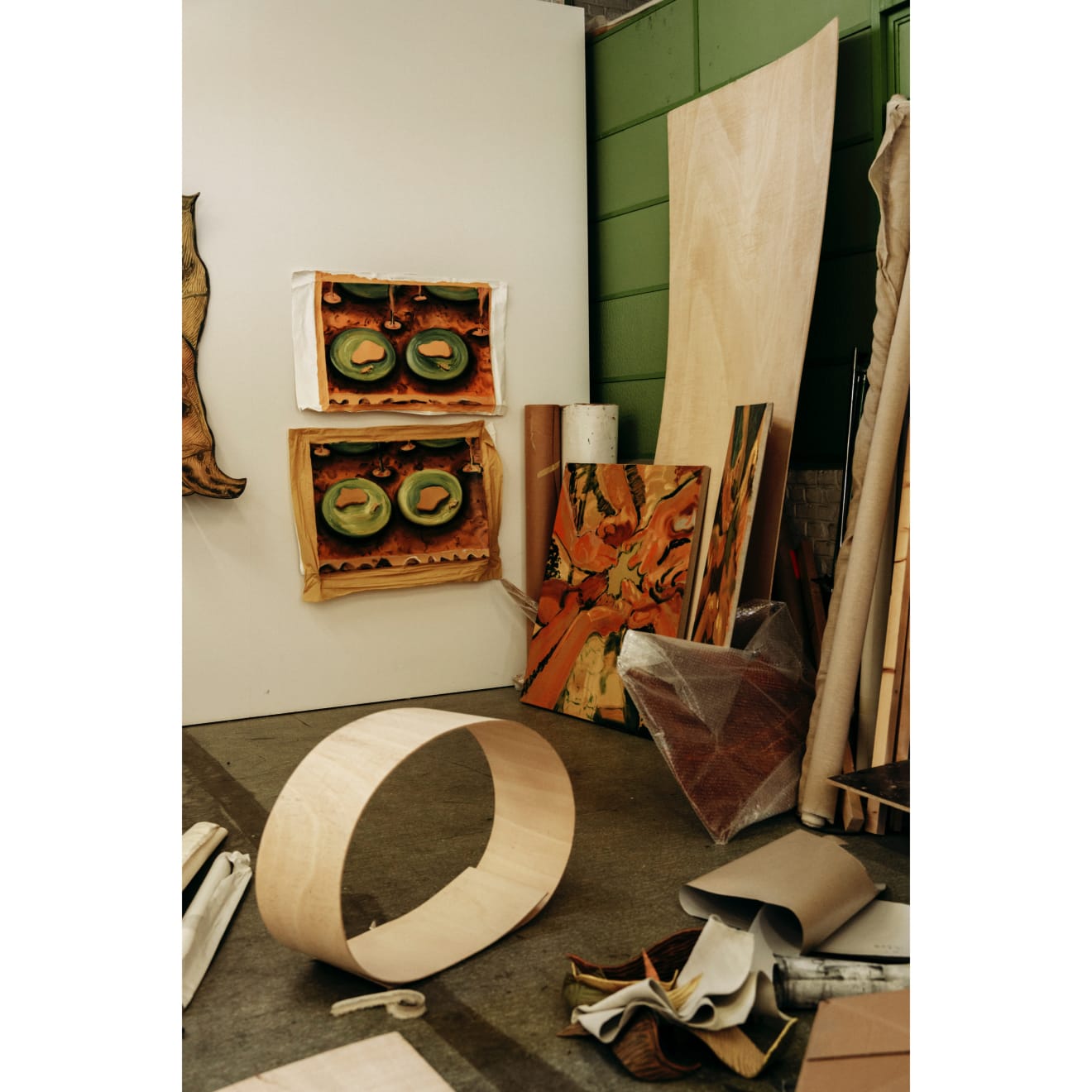Following her residency at M Leuven in Brussels, we sat down with the talented Anna van der Ploeg to discuss a limited series of new paintings she has created for Otomys.
OTOMYS: Within your recent works, hands, tables and crockery are a recurring motif throughout your paintings. What is the significance of this imagery?
Anna van der Ploeg: I have a long-standing interest in tables. There’s this Hannah Ahrendt quote that speaks to their significance:
“...The weirdness of this situation resembles a spiritualistic séance where a number of people gathered around a table might suddenly, through some magic trick, see the table vanish from their midst, so that two persons sitting opposite each other were no longer separated but also would be entirely unrelated to each other by anything tangible.” (Arendt, H. (1958). The Human Condition (2e) Chicago & London : The University of Chicago Press, p. 52-53)
I like their ubiquity and the way they prescribe roles and means of interaction, the way we all have associations with them, their theatrical potential, and relationship to both writing and dialogue.
OTOMYS: Why are you drawn towards themes of communion, social gatherings and human interactions?
Anna van der Ploeg: So many reasons, this is a difficult question to answer. Each person is already so layered and influenced by their surrounding context, the situation they are placed in, their own particular interiority. When placed within a different and dynamic environment with another being, what each individual might bring out in another is completely unpredictable. I like chance and precarity and how it destabilises the individual’s attempts to follow a rule or script. It’s a way of revealing the mind and values of an individual. I’m not trying to be vague, but it’s tricky to be concise. Politics is farcical if we don’t try to understand or appreciate the people around us.
OTOMYS: Your representation of human interaction is largely limited to hands and objects. Why do you focus on this specific fragment of the human form?
Anna van der Ploeg: Hands are very expressive and personal. They are full of character, and tools of action. Painting particular people, I became preoccupied with trying to capture ‘them’, or represent them as they are. When actually what I was interested more so was in what they were doing and how they were engaging.
OTOMYS: I am curious about the distinct colour palette you employ. It reminds of the neo impressionists and art nouveau posters; bohemian combination of cadmium red, emerald green, chartreuse and black. What artists inspire your practice?
Anna van der Ploeg: I don’t look at other artists’ work to inspire my use of colour. I tend to be inspired by artists with practices quite different to my own, or by my peers and friends. But in terms of names, I like Marisol Escobar, Sam Nthlengethwa, Alison Knowles, Erika Verzutti, Jeanne Gaigher, Dada Khanyisa, Slow Reading Club, W.S. Merwin, Dimitris Papaioannou, Fernando Pessoa, Anne Carson, Danez Smith, Kai Althoff, Isamu Noguchi, Ree Morton, Igshaan Adams and Derek Jarman.
OTOMYS: Following on from this, what inspires your unique use of colour? What is the conceptual significance of colour within your paintings?
Anna van der Ploeg: This is decided in the shop, when I choose tubes of paint, usually out of curiosity and without too much consideration for what I own already. Then if the paint paints nice, I use it more…
OTOMYS: There is a strong poetic quality to your artwork titles. What inspires your wordings? What, in your opinion, is the significance of a written title to an artwork?
Anna van der Ploeg: My feelings about what titles do changes from time to time, and I realised that lately something has shifted. I used to think titles more necessary than what I do now. An artwork does not need a title, but it’s an opportunity to be generous, to add another dimension coming from the mind of the artist. I think a title is able to connect with viewers who possess a more inherent impulse towards writing, rather than via the hand or the eye, maybe. Reading is a visual experience for me, and I think a title is a way to offer that to the reader, to offer up word and image together.
OTOMYS: You dance between a variety of different mediums, including oil painting and print making. How do these different techniques and mediums inform each other within your practice?
Anna van der Ploeg: Yes, different mediums allow different things. Certain materials speak better to particular ideas. I'm not loyal to any particular medium, so I tend to describe what I do as working across sculpture, paint and print. The carved wooden pieces came out of years of working in these three arenas, and wanting the best of all worlds, all at once. I did a residency in Japan to train in mokuhanga, a traditional watercolour woodblock printmaking technique, and since then it's been just time in the studio that has worked its way to something new.
To enquire about Anna van der Ploeg's work please contact info@otomys.com.
Click HERE to read more artist interviews like this!
September 13, 2023





